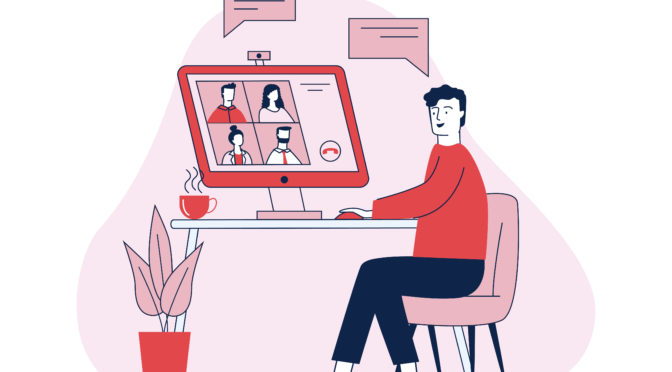
Posted on By Yeniree BocaneyTagged Gestión TI, Reclutamiento General, Reclutamiento TI, Técnicas de Selección de Personal
As the COVID-19 pandemic forces more people (including recruiters) to work remotely, remote job interviews are becoming increasingly common.
However, this is something that could intimidate even the most experienced recruiter. It happens because, while the fundamentals of traditional interviewing are still valid for videoconferencing, a remote interview comes with an extra set of challenges and considerations that recruiters must take into account.
But no worries, we have compiled our tips for preparing and conducting an effective remote interview.
Prepare your equipment
When performing any remote process, it is crucial to seek communication solutions that best reproduce the benefits of in-person interactions, principally when conducting an interview. To do this, try to use the appropriate communication tools for the various stages of the interview process, for example, an optimal microphone, camera, and software.
It is also particularly important to perform a technical test of your videoconferencing platform at least two hours before the interview. The test will give you enough time to adapt if something does not work. Check your computer’s camera, microphone, and Internet connection. Also, do not forget to make sure you know your login information if you have not used the videoconferencing application or tool in a while.
If you are using a laptop, tablet, or smartphone, check your WiFi connection to make sure it is ready to go. Also, check that your devices have enough charge to complete the entire interview process. And, finally, log on to the platform several minutes before the interview to give you time to settle in.
Inform candidates about the basic requirements
Communicate in advance what they will need for the videoconference. For example, an internet connection, have the software that you will use to conduct the interview, headphones, microphones, and a quiet environment with no distractions. That way, the candidate will be able to prepare in advance.
Find the right scenario
When preparing for your interview, choose a quiet place where you will not be interrupted. Make sure the background the candidate will see during the interview time is free of any distractions. Many videoconferencing applications allow for a blank one. Adjust the lighting using a desk lamp or natural light to eliminate shadows.
Be careful of pets and children who may want to appear in the background and distract the interviewee. You can also place a note on your door that says you are not available at the moment.
Avoid having remote interviews in frequented areas of your home, and do not forget to turn off alerts and chat notifications during the interview time.
Prepare a Plan B
What if, despite all your preparations, the platform you planned to use starts to fail? Make sure you have the candidate’s email and phone number handy. This way, you can contact them in case of a technical problem. In this case, you could continue the interview by phone.
A common problem in interviews via videoconferencing platforms is the speed of the internet connection. If more than one person is online in an apartment, home, or office at the same time, it can cause delays or other problems with the platform. Try to schedule the interview at a time when there are fewer people in your home connected to the Internet.
Remember to be a good listener
Face-to-face interviews provide the interviewer with many opportunities to demonstrate that they are listening to the speaker, which is possible through small signals or gestures. However, during a remote interview, it may be hard to represent any of these signs or gestures, but it is not an impossible task.
Fortunately, there are several ways to show active listening during a remote interview. For example, look at the camera as a way to replicate eye contact. Make a brief pause after speaking, so the candidate can think about their answers. Also, be sure to smile and laugh when appropriate, as you would in person.
Dress properly
Dress as you would go to work. Even if you are at home, please do not interview in your pajamas! Also, try to use neutral and solid colors, as patterns can appear distorted on the screen and distract the interviewee. Adjust your camera to your eyes level and leave a little room for your head.
Watch your body language and voice tone
As in a face-to-face interview, you must watch your body language, facial expressions, and tone of voice as you address the candidate. Since this is a videoconference interview, too many gestures will distract the interviewee and may distort the message.
Be aware of your body’s movements, and make sure your gestures are comfortable and natural. Avoid sudden or too fast moves, as this could also distract the interviewee.
During a remote interview, remember to maintain your energy level and smile as you speak. Think about your voice tone and speak with projection and clarity. Show the other person that you are involved in the conversation.
Finally, when the interview is complete, explain to the candidate the next step and the estimated time that the selection process will take. Ask if they have any questions and do not forget to thank them for their time before the end of the videoconference.
